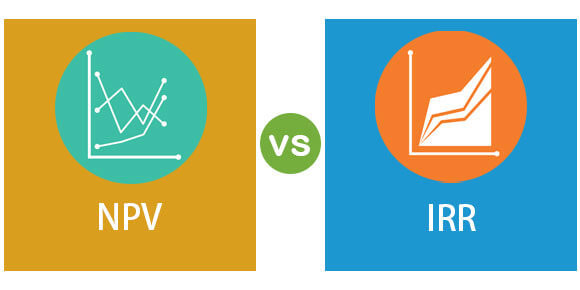In the world of investing, success is often veiled in complexity and uncertainty, making the path to financial growth seem daunting for both novice and experienced investors alike. "Unlocking Investment Success: The Four Critical Questions to Guide Your Journey" aims to demystify the process, providing a clear and concise roadmap to making informed investment decisions. By focusing on four pivotal questions, this guide empowers readers to build a solid foundation for their investment strategy, encouraging a thoughtful approach to portfolio management and risk assessment. Join us as we unveil these questions, poised to transform your investing approach and set you on a path toward achieving your financial objectives.
1. What is Your Investment Goal?
Defining your investment goal is the first step towards unlocking success. This question requires you to clearly define what you hope to achieve through investing. Are you looking for long-term growth, immediate income, or a combination of both? Understanding your investment goal will help guide your decisions and keep you focused on achieving your desired outcome.
Defining Your Financial Objectives:
Once you have identified your investment goal, it is important to further define your financial objectives. This may include setting a target rate of return, determining a specific time frame for achieving your goals, and establishing risk parameters. By clearly outlining your financial objectives, you can better assess the potential risks and rewards associated with different investment opportunities.
The Difference between Saving and Investing:
It's important to note the distinction between saving and investing. Depending on your investment goal and financial objectives, you may allocate a portion of savings towards investments, but it is crucial to have a clear understanding of how much risk you are comfortable taking on.
The Importance of Being Goal-oriented in Investment Decisions:
Being goal-oriented in your investment decisions can help you stay disciplined and focused on achieving your desired outcome. This means regularly reassessing your investment strategy and making adjustments as needed to align with your goals and objectives. By staying true to your investment goals, you can avoid getting swayed by short-term market fluctuations and maintain a long-term perspective.
2. What is Your Risk Tolerance?

Investing always involves some level of risk, and it's important to determine your comfort level with taking on risk before making any investment decisions. Factors such as age, income, and financial responsibilities can all impact one's risk tolerance. It's important to assess these factors and ask yourself how much loss you are willing to accept in pursuit of potential gains.
Understanding the Concept of Risk in Investing:
Risk in investing refers to the potential for loss of capital or diminished returns. It is important to understand that risk and reward are closely linked, meaning that investments with higher potential for return also typically carry a higher level of risk. By understanding your risk tolerance and how it relates to different investment opportunities, you can make more informed decisions about where to allocate your assets.
Methods to Evaluate Your Risk Tolerance:
There are various methods and tools available to help investors evaluate their risk tolerance. These may include questionnaires, discussions with financial advisors, or using online resources to assess your own risk profile. It's important to regularly reassess your risk tolerance as it can change over time due to life events or changes in financial circumstances.
Adjusting Your Investment Strategy Based on Risk Tolerance:
Once you have a clear understanding of your risk tolerance, you can adjust your investment strategy accordingly. This may include diversifying your portfolio with a mix of low-risk and high-risk investments, or choosing to focus on more conservative options. Regularly evaluating and adjusting your investment strategy based on your risk tolerance can help mitigate potential losses and optimize potential gains.
3. How Will You Diversify Your Portfolio?
Diversification is a key element of any successful investment strategy. It involves spreading your investments across various assets and sectors to reduce overall risk. By diversifying, you are not putting all your eggs in one basket and can potentially mitigate losses from one underperforming asset with gains from another.
The Role of Alternative Investments in Diversification:
Alternative investments, such as real estate, private equity, and hedge funds, can play a valuable role in diversifying a portfolio. These investments often have low correlation to traditional assets like stocks and bonds, making them less susceptible to market fluctuations. However, it's important to thoroughly research and understand these alternative options before investing.
Rebalancing Your Portfolio to Maintain Diversification:
As your investments grow and change, it's important to periodically rebalance your portfolio to maintain diversification. This involves adjusting the allocation of assets based on their performance and overall market conditions. By regularly reassessing your portfolio, you can ensure that it aligns with your investment goals and risk tolerance.
Understanding Asset Classes:
Asset classes refer to different categories of investments, such as stocks, bonds, and cash equivalents. Each asset class has its own characteristics and can play a role in diversifying your portfolio. It's important to understand the potential risks and returns associated with each asset class before making investment decisions.
4. What is Your Investment Time Horizon?

Investment time horizon refers to the length of time you plan to hold your investments before withdrawing them. It is important to consider your investment time horizon when making decisions about what assets to invest in and the level of risk you are willing to take on.
Short-term vs. Long-term Investments:
Different investments have varying time horizons, with some suitable for short-term gains and others more suitable for long-term growth. It's important to align your investment time horizon with your financial objectives and regularly reassess as your goals may change.
The Importance of Patience in Investing:
Investing requires patience, as it takes time for assets to grow and generate returns. It's important to resist the urge to make impulsive decisions based on market fluctuations and instead stay focused on your long-term investment goals. By maintaining a patient approach, you can ride out market volatility and potentially see greater returns over time.
Adjusting Your Investment Time Horizon with Changing Life Goals:
As your life goals and financial objectives change, it's important to reassess your investment time horizon and make adjustments as needed. This may involve taking on more or less risk, reallocating assets, or changing the focus of your investments. Regularly reviewing and adjusting your investment strategy can help ensure that it aligns with your current needs and goals.
Conclusion:
Having a clear understanding of your risk tolerance, diversification strategies, and investment time horizon can help you make more informed decisions and stay on track to reach your financial goals. It's important to regularly reassess these factors and adjust your investment strategy accordingly to optimize potential gains and mitigate potential losses. By staying true to your investment goals and maintaining a long-term perspective, you can build a successful and resilient portfolio.




